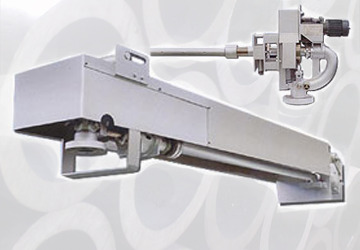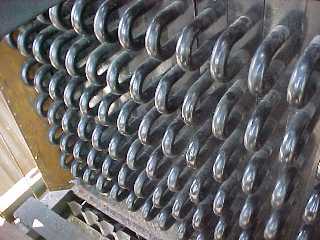
The Ultimate Guide to Sootblower Replacement Parts
Sootblowers are essential components of industrial boilers. Just like the name implies, they can remove soot and ash buildup from a boiler’s heat exchange surfaces.
Home » What Can Waste Heat Be Used For?
During boiler operation, heat generated through combustion is used to produce steam, regulate facility temperature, and aid in industrial processes like refinement and energy generation. Heat production is becoming increasingly expensive alongside rising fuel costs, while sustainability and emissions targets are more and more stringent. Waste heat recovery systems are a solution to address both of these pain points.
The heat generated as a byproduct of any engine running or machine working is waste heat. Just like a light bulb produces heat when it emits light, all machines and tools on the planet lose some of their energy in the form of heat. In fact, according to the Yale School of the Environment, nearly 70% of all energy produced by humanity is lost as waste heat. Industrial applications and power facilities try to minimize this energy loss to keep efficiency as high as possible.
In the past, all of the excess heat generated during your process dissipated into the environment. But recovered heat is a bountiful form of energy that is already produced during industrial processes, making it a perfect candidate for collection. Over the last few years, governments and businesses have increased efforts in developing different technologies to capture recovered heat to save energy, increase efficiency, and increase sustainability. This process is called waste heat recovery.
Recovered heat can be used for numerous residential, commercial, and industrial purposes. Below are some prominent examples.
A waste heat boiler uses heat generated during operation to increase steam production without increasing fuel consumption or emissions. A boiler system can lose heat in many ways, including flue gases, heat loss from pipes, and boiler exhaust. Hot exhaust gases from a process furnace enter the waste heat recovery boiler, where their heat passes into tubes full of cold water, converting the water into steam. The steam can then drive turbines and generate electricity for your facility.
This electricity can reduce the energy needed to power your operations, reducing operational costs. In addition, some facilities can coordinate with local energy companies to sell the generated electricity, providing an additional source of revenue for your business.
Because the “fuel” needed to operate waste heat recovery boilers is only available during system operation, they supplement existing boilers and do not replace them. As a result, these boilers use less energy, release no additional emissions, and offer a sustainable method for increasing your facility’s steam capacity.
One of the most common uses for waste heat recovery is for temperature control of your facility. Many industrial processes produce a lot of heat during operation. This heat can make the environment directly surrounding furnaces, ovens, and manufacturing areas uncomfortable. Modern waste heat recovery systems use fans to pull the heated air from around these areas and redistribute the heat throughout the facility. This process makes the production areas more comfortable and can reduce the amount of fuel necessary to heat the rest of the facility, reducing heating costs.
While it may seem counterintuitive, a promising application for waste heat is to cool facilities through air conditioning. Unfortunately, absorption coolers are typically expensive and bulky for large-scale applications. As a result, organizations are conducting extensive research on ways to decrease the size of these systems and more efficiently use waste heat to power cooling.
Another option for recovered heat is to provide hot water. Waste heat enters a piece of equipment called an exchanger, where the heated air passes through tubes that run parallel to pipes of water. The heat is then “exchanged” from the warm air to the cold water, increasing the water’s temperature. The water is used for industrial applications, cleaning, sanitation, handwashing, and bathing. If the recovered heat is not enough to heat the water, supplementary energy from the traditional boiler can heat the water. In this scenario, the recovered waste heat increases the system efficiency and reduces the amount of energy needed to provide hot water.
Industrial Boilers America is a manufacturer with over 20 years of experience developing and installing industrial boilers, heaters, blowers, fans, and auxiliary equipment. One of the ways we are leading the way to zero waste is with our high-efficiency waste heat recovery boilers.
Call us today and let our team answer all your questions about heat recovery options for your facility.
At Industrial Boilers America, we lead in providing the development, licensing, and deployment of Industrial Power plants. We partner with other leaders of communities and governments to foster long-term relationships that create sustainable energy, jobs, and social responsibility. Our philosophy that sustainability should be rooted in the betterment of the ecosystem rather than profit allows us to provide services that will enable our partners to reinvest in themselves, resulting in a sustainable community.

Sootblowers are essential components of industrial boilers. Just like the name implies, they can remove soot and ash buildup from a boiler’s heat exchange surfaces.

Boilers provide essential heating and steam generation for industries ranging from power production to manufacturing. To ensure safety, efficiency, and functionality, rely heavily on sophisticated

Industrial boilers are essential for keeping the world moving. Understanding the critical industrial boiler parts ensures efficient operation, safety, and longevity of equipment. Main Industrial